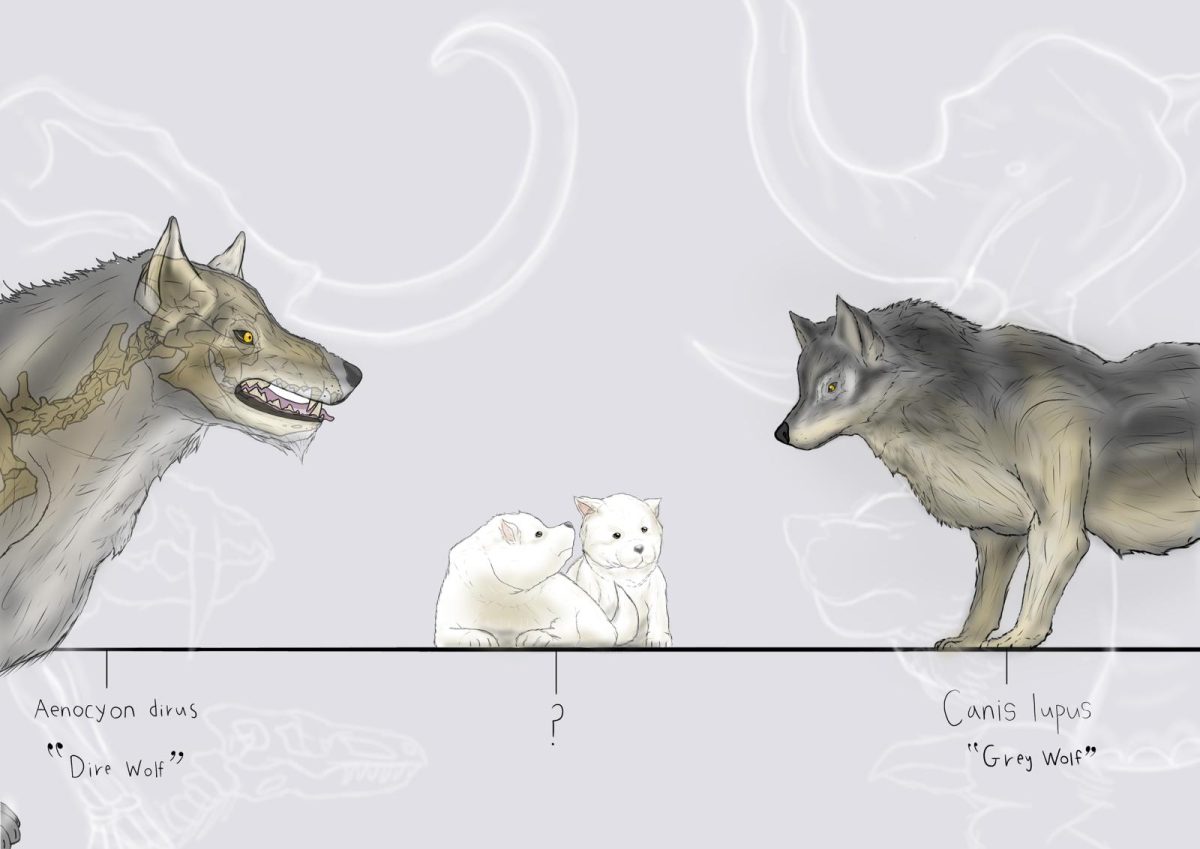Imagine that one day, the insects in our yards, the birds above our heads and other familiar species that make up our everyday scenery disappear — completely wiped away from the surface of Earth, never to be seen again. According to the World Wide Fund for Nature, 10,000 to 100,000 species are estimated to go extinct each year.
The recent resurrection of dire wolves (grey wolves containing genes that exhibit dire wolf-like features) by Colossal Biosciences is fascinating, technologically speaking. But many seem to overlook the dangerous form of luxury it creates in humanity’s consciousness towards the extinction of surrounding species.
The dire wolf is estimated to have gone extinct nearly 13,000 years ago. Bringing back a species that once lived in an environment so drastically different seems irrelevant and even harmful to the new wolves themselves. Genetic modification has always sparked controversy, and using that method on animals without any reliable precedent on how it would affect their well-being is extremely unmerited.
The goal of the company is to “reintroduce lost species back into the habitats they once occupied,” according to Matt James, the company’s chief animal officer. Are these wolves, and any other species that may be “de-extinct” in the future, truly able to thrive as they once did? The introduction of an unfamiliar species could greatly disrupt the balance within a habitat, creating further threats to existing species as well. The dire wolves went extinct for a reason, and so did the woolly mammoth, Tasmanian tiger and dodo that the company wishes to revive in the near future. The focus should not be on their revival, but on using their extinction as evidence of Earth’s changing form and a lesson on how humanity should treat other species as technology advances.
This news should have made us step back and notice the hidden narrative: humans are not brave enough to take responsibility for sacrificing other species. Instead, many praised it and found it fascinating, comparing it to the movie “Jurassic Park.” For one, those who have seen the movie would know that reinventing dinosaurs only brought pure human entertainment and later chaos, but none of the scientific or environmental improvements. The overall attitude toward species conservation today is too halfhearted.
While not all species have gone extinct purely on account of human actions, reintroducing those that did to a habitat proven to be unlivable, with no improvements made whatsoever, is setting them up for extinction once again. It is obvious we are too afraid to face the fundamental issue that lies in thousands of species going extinct each year: ourselves. Inventing technology or “solutions” that disregard our past mistakes is simply the easy way out. However, shifting the focus from the “why” and “how” only calls for reduced biodiversity and repeated irresponsibility.
The company has raised significant funds through multiple investors. But, species revival is not where money should be allocated. Instead, there should be increased dedication of time and money into preserving currently endangered species — a list that reaches up to more than 47,000, or 28% of all assessed species on the brink of extinction, according to the International Union for Conservation of Nature.
Throughout the course of history, technology has always moved faster than ethical concerns. From social media algorithms to artificial intelligence, consequences pour in unstoppably. By the time realization hits and any form of action is taken to limit or manage the risks, it is too late; the damage has already been done. As the revival of extinct species dashes straight toward a similar fate, appropriate measures must be taken to properly administer the de-extinction projects and generate dialogue from a basic, ethical level.
Instead of lightening our burden by attempting to resurrect extinct species, the focus should be the preservation of any remaining species and educating ourselves on how we can restrict activities to be less damaging. Instead of clinging to the past, the focal point should be what biodiversity’s interconnectedness with human activities means in terms of our future actions. It is time we stop avoiding the truth and the liabilities.










